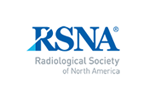How to Read Your Lung Cancer Screening Radiology Report
What is Lung Cancer Screening commonly used for?
Doctors use screening exams to find disease before symptoms begin. The goal of Lung Cancer Screening is to detect lung cancer at its earliest and most treatable stage. Individuals who have a high risk of developing lung cancer – but no signs or symptoms of the disease – undergo low dose computed tomography (LDCT) scanning of the chest.
LDCT utilizes x-ray beams to produce multiple pictures of the inside of the body. The LDCT images can help the radiologist detect many abnormalities while using up to 90 percent less radiation than a normal chest CT scan.
For more information, see the Lung Cancer Screening page.
Sections of the Radiology Report
Your report has several key sections: Clinical History, Comparison, Technique, Findings, and Impression.
Clinical history: This section explains why you're getting scanned, or in this case, screened. For a lung cancer screening, it usually includes your age, sex, and smoking history. It will also say whether it's your first scan, or a follow up scan.
Example:
• Lung Cancer Screening with low dose computed tomography performed January 10th, 2025.
Technique: This tells how the scan was performed. For a CT lung screening, you lie on your back and briefly hold your breath while the CT scanner captures a series of x-ray images from your lower neck to your upper abdomen.
Comparison/Priors: If you have had relevant prior imaging exams, the radiologist will compare them to the new imaging exam. If so, the radiologist will list them here. Comparisons usually involve exams of the same body area and exam type. It is always a good idea to get any prior imaging exams from other hospitals/facilities and give them to the radiology department where you are having your test. Having these older exams can be very helpful to the radiologist. In some cases, simply having your prior test available will make a difference in what the radiologist recommends if they see something on your scan. The prior exam can help show if a previous finding is unchanged or if there is a new finding.
Findings: This section covers what the radiologists see on your images.
- Pulmonary nodules – These are small spots in your lungs – most of them are harmless, like freckles or moles on your skin but the radiologist will track them over time just to be safe. If there are no nodules, the report may say “none” or “no suspicious nodules.”
- Emphysema – If present, emphysema is graded as minimal, mild, moderate, or severe. If not, you will see the word “none.”
- Coronary artery calcification – This is visible plaque in your heart's blood vessels. Plaque can narrow the arteries and increase the risk of a heart attack. Coronary calcification is graded as mild, moderate, or severe.
- Pleural effusion and airways – The radiologist checks for fluid around the lungs and whether the airways are clear
- Heart and major vessels – The radiologist looks for signs of an enlarged heart, fluid around the heart, or abnormalities of major blood vessels like the aorta and pulmonary artery.
- Lymph nodes – Enlarged lymph nodes, also called lymphadenopathy, may be due to infection, inflammation, or other conditions.
- Upper abdomen – Since the scan includes the top of your abdomen, the radiologist will note any visible issues or simply say it's “unremarkable” if all looks normal.
- Bones – The radiologist looks at the bones for fractures, bone lesions, or age-related changes. If nothing stands out, they will say the bones are “unremarkable.”
Impression – the takeaways
In this section, the radiologist summarizes the findings and reports the most important findings that they see and possible causes for those findings. This is the section the radiologist wants your provider to focus on. It also has recommendations for any follow-up actions.
You'll also see a Lung-RADS score. Lung-RADS is short for Lung Imaging Reporting and Data System. This score helps determine what happens next:
- A score of 1 or 2, aka “negative,” means there are no concerning nodules. You'll be asked to come back for another scan in 12 months.
- A score of 3 or 4, aka “positive,” means something needs closer follow-up. You may be asked to repeat the scan in 3 or 6 months most likely, talk to a pulmonologist, or, rarely, you may need a biopsy.
- A score of zero, aka “incomplete,” means more images are needed. For example, if you had a lung infection, you may need to repeat a scan in 1 to 3 months
- And finally, if the radiologist finds something important but it is not related to lung cancer, like an aortic aneurysm, the letter “S” may be added to your score. “S” findings are often called incidental findings and may need follow-up. Talk to your doctor about any incidental findings.
Sometimes the report does not answer the clinical question, and more exams may be needed. More exams may be necessary to follow up on a suspicious or questionable finding.
Example:
1. There is a new 2 cm nodule on the lung which is indeterminate (cannot be definitively diagnosed by the study).
2. RECOMMENDATION: Given the patient's history of smoking, a biopsy of the lung is recommended to better characterize the lung nodule to exclude the possibility of lung cancer.
Additional Information
Once the report is complete, the radiologist signs it, and sends the report to your doctor who will then discuss the results with you. The doctor may upload the report to your patient portal before they call you. If you read the report before talking to your doctor, don’t make assumptions about the report’s findings. Something that seems to be bad often turns out not to be a cause for concern.
Sometimes, you may have questions about your report that your doctor cannot answer. If so, talk to your facility's imaging staff. Many radiologists are happy to answer your questions.
This page was reviewed on August 04, 2025




